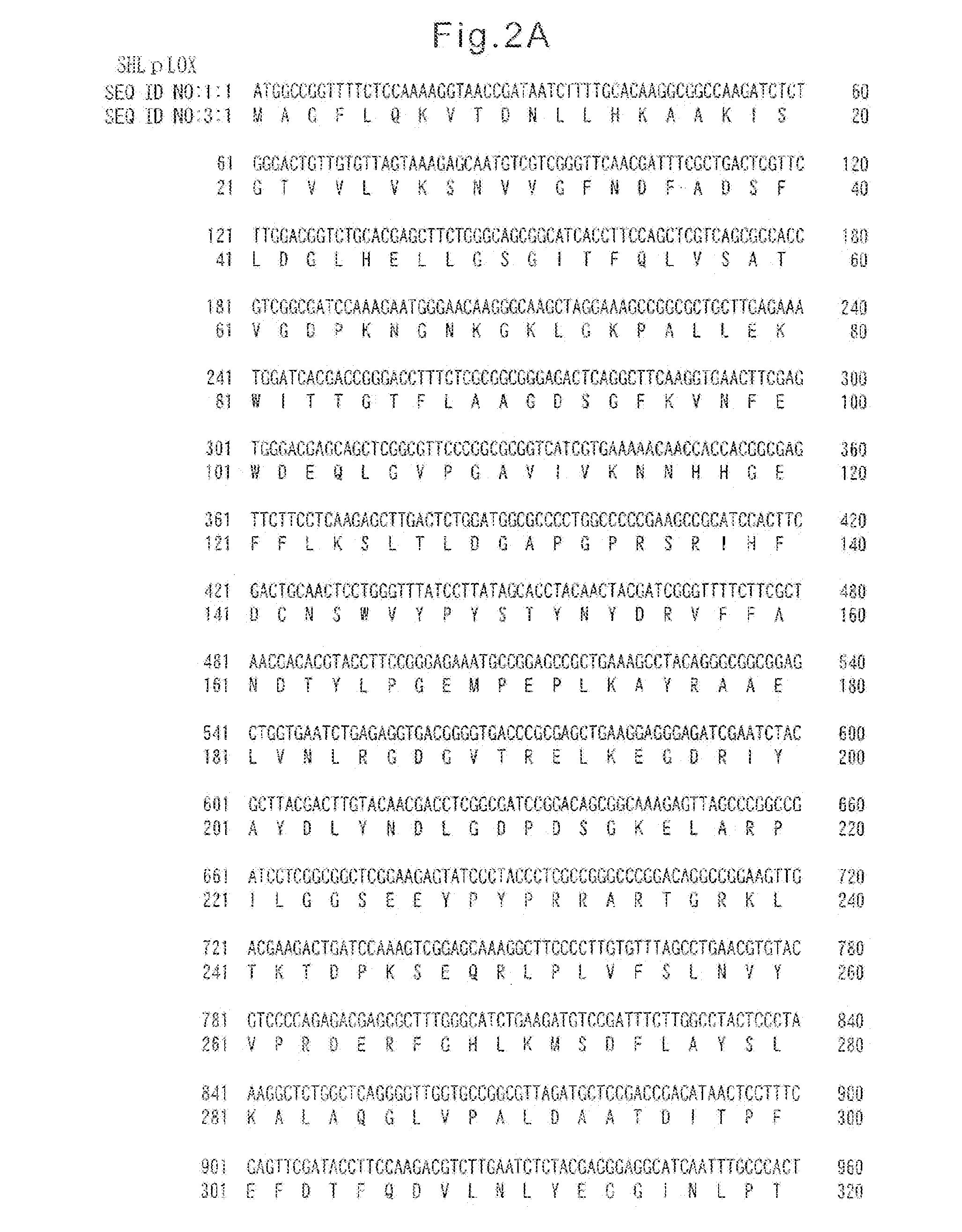Method of preparing koda using lemna paucicostata
- Summary
- Abstract
- Description
- Claims
- Application Information
AI Technical Summary
Benefits of technology
Problems solved by technology
Method used
Image
Examples
example 1
Screening of a High KODA-Producing Lemna Paucicostata Strain
[0037]62 types of Lemna paucicostata harvested from different places were prepared and were subcultured in the ½-diluted Hutner's medium under continuous illumination of daylight fluorescent light at 24-25° C. The ½-diluted Hutner's medium comprises the following ingredients:
Sucrose10g / lK2HPO4200mg / lNH4NO3100mg / lEDTA free acid250mg / lCa(NO3)•4H2O176mg / lMgSO4•7H2O250mg / lFeSO4•7H2O12.4mg / lMnCl2•4H2O8.92mg / lZnSO4•7H2O32.8mg / lNa2MoO4•2H2O12.6mg / lH3BO37.1mg / lCo(NO3)•6H2O0.1mg / lCuSO4•5H2O1.97mg / land pH was adjusted to 6.2-6.5 with KOH (50%).
[0038]The grown Lemna paucicostata was spreaded on a filter paper, and after incubating for 2 hours, it was immersed in water for 1 hour. The water was subjected to high performance liquid chromatography (HPLC; column: TYPE UG120 5 μm, SIZE: 4.6 mm I.D.×250 mm; guard filter: INERTSTL 4.6 mm×50 mm; eluent: 50% acetonitrile+0.1% trifluoroacetic acid; condition: absorption wavelength 210 λ(nm), fl...
example 2
Cloning of Lipoxygenase Derived from Lemna Paucicostata SH Strain and Measurement of the Activity Thereof
[0039]From Lemna paucicostata (SH strain), total RNA was extracted by using the RNeasy Plant Mini Kit (QIAGEN), and then cDNA was synthesized by using 1.8 μg of total RNA as the template in LongRange 2 Step RT-PCR Kit (QIAGEN).
[0040]Then, degenerate PCR (PCR condition: initial denaturation at 94° C. for 3 minutes; a cycle comprising 94° C. for 0.5 minute, 47° C. for 0.5 minute, and 72° C. for 1.3 minute is carried out for 39 times) was carried out by using the cDNA as the template, and using the following degenerate primers (LpDPf, LpDPr) to obtain a partial sequence of 9-lipoxygenase of interest.
(SEQ ID NO: 5)LpDPf: 5′-GCITGGMGIAGIGAYGARGARTTY-3′(SEQ ID NO: 6)LpDPr: 5′-GCRTAIGGRTAYTGICCRAARTT-3′
[0041]wherein, I represents inosine.
[0042]After the base sequence of said partial sequence was determined, BLAST search was carried out based on the sequence information obtained. As a re...
example 3
Cloning of the AOS Gene Derived from Lemna Paucicostata SH Strain and the Activity Measurement Thereof
[0047]Total RNA was extracted from Lemna paucicostata (SH strain), and cDNA was synthesized by the RT-PCR method. Then, using the synthesized cDNA as the template and using the primers derived from Arabidopsis thaliana as described below, a partial sequence information of allene oxide synthase derived from the SH strain (SHLpAOS) was obtained by setting the annealing temperature for PCR at a low temperature of 45° C.
(SEQ ID NO: 9)AOS-Forward: 5′-GGAACTAACCGGAGGCTACCG-3′(SEQ ID NO: 10)AOS-Reverse: 5′-CCGTCTCCGGTCCATTCGACCACAA-3′
[0048]Based on this sequence information, the full-length sequence was determined by the 3′ or 5′ RACE (Rapid Amplification of cDNA end) method. As a result, a novel AOS homolog (nucleotide sequence: 1443 bp, amino acid sequence: 480 aa, deduced molecular weight: 53.3 KDa) of one sequence was obtained from the SH strain (FIG. 3).
[0049]The sequence of SHLpAOS o...
PUM
| Property | Measurement | Unit |
|---|---|---|
| Fraction | aaaaa | aaaaa |
| Fraction | aaaaa | aaaaa |
| Time | aaaaa | aaaaa |
Abstract
Description
Claims
Application Information
 Login to view more
Login to view more - R&D Engineer
- R&D Manager
- IP Professional
- Industry Leading Data Capabilities
- Powerful AI technology
- Patent DNA Extraction
Browse by: Latest US Patents, China's latest patents, Technical Efficacy Thesaurus, Application Domain, Technology Topic.
© 2024 PatSnap. All rights reserved.Legal|Privacy policy|Modern Slavery Act Transparency Statement|Sitemap



